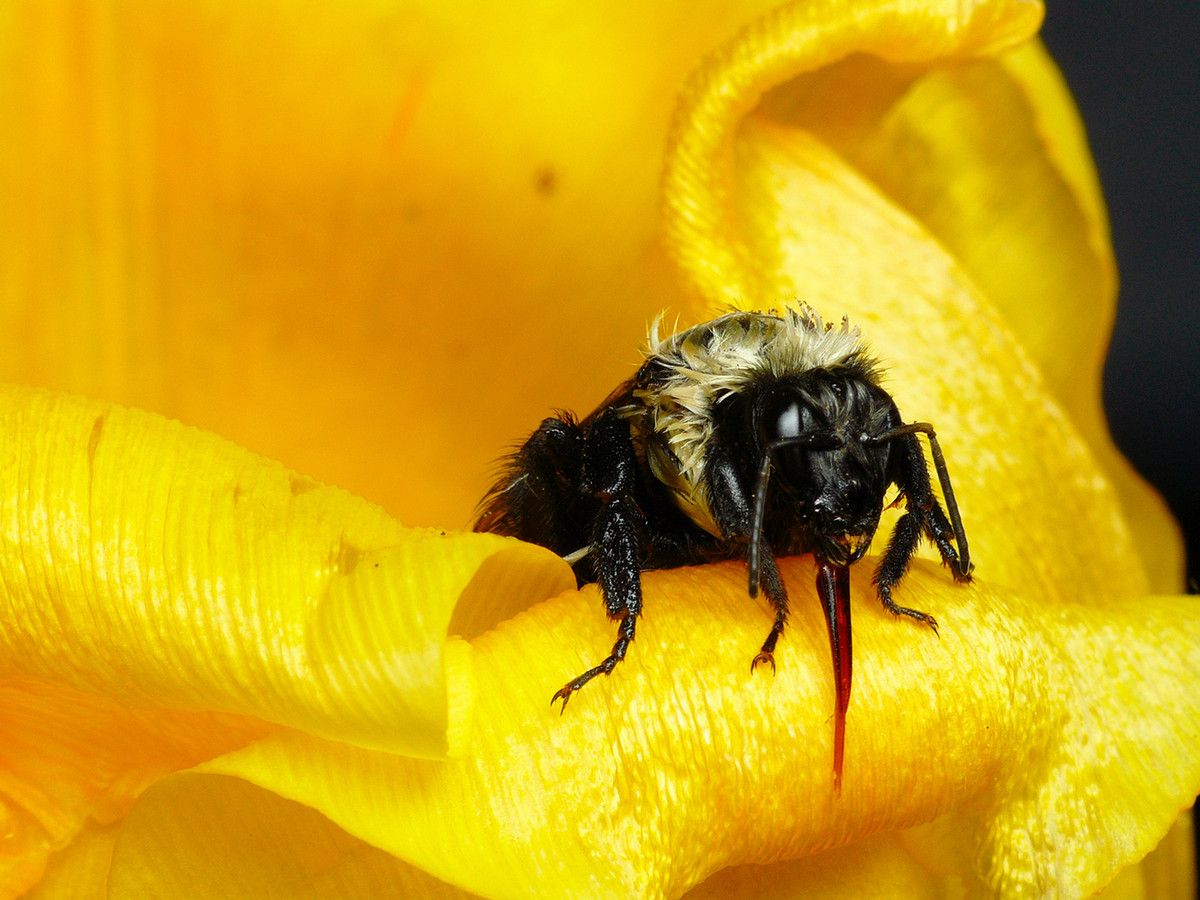When water leaked into containers of dormant queen bumblebees, the scientists assumed they’d need to hold a state funeral. But amazingly, the regal insects lived, despite drowning! Scientists knew that these queens typically overwinter underground, lying dormant in a state similar to hibernation. They wondered if their lab accident indicated that the bees were equipped to survive underground floods. So, they ran a new experiment.
Taking 143 common eastern bumblebee queens, researchers put every bee in its own castle—or, plastic tube—filled with topsoil. The tubes stayed in the fridge for a week, inducing wintertime dormancy. Then 126 of the tubes were filled with water. Some of the queens were allowed to float, while others were held underwater by a plunger. Scientists left some tubes alone for 8 hours, some alone for a full day, and others alone for a week. Researchers designed such different watery conditions to mimic the varied kinds and durations of flooding that queens likely encounter in the wild.
The experiment’s results feel like a royal proclamation. Hear ye, hear ye! Over 80 percent of the queens lived to tell the tale, no matter their tube. Huzzah!
All this pageantry matters because every year, the queen must establish her kingdom anew. The worker and male bumblebees all perish in the winter, but if the queen survives, she can lay her eggs in the spring. Through her endurance and the birth of her heirs, her colony lives on. While more research is needed to discover how the queen bees survive the flooding, we can confidently declare: all hail the queen of the drowned—long may she reign!










